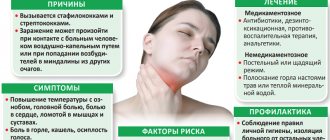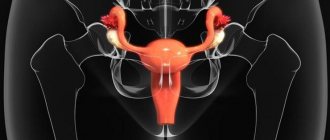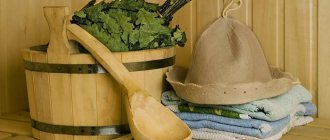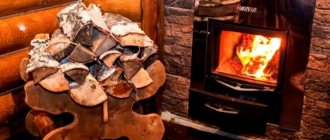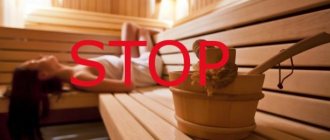Is it possible to go to the bathhouse with a cough?
The question of whether it is possible to take a steam bath when you have a cough cannot be answered unequivocally. On the one hand, this is a good replacement for warming medical procedures used to treat diseases of the respiratory system, on the other hand, heat exposure can harm a weakened body.
To avoid exacerbation of a cold, you need to go to the bathhouse when you have a cough without fever or when the disease is still in its initial phase.
Positive effect
The desire to go to the bathhouse with a cough is justified, because it has its advantages:
- The heated air dilates the bronchi, a person breathes easier, and the number of coughing attacks decreases.
- Under the influence of steam, sweating increases, which means that waste and toxins clogging the body are released. At elevated temperatures, interferon, an antiviral protein that blocks the spread of infection, is produced more intensively.
- High air humidity is useful against any type of cough. With a dry cough, the formation of sputum increases, it becomes thinner, which makes it easier to remove from the respiratory system. If you are bothered by a wet cough with phlegm, then the release of it from the airways is accelerated. It is not recommended to go to the bathhouse if you have a sore throat, as this is usually associated with a high temperature. But dryness or a slight sore throat, which is felt when the disease is just developing, can be eliminated in the steam room.
- The aroma of essential oils from heated oak and birch brooms helps to overcome a runny nose. The snot becomes thinner, its removal improves, and breathing normalizes.
- Massage with brooms accelerates blood circulation, relaxes muscles, and removes body aches. Immunity increases, and it becomes easier for the body to resist the disease.
In heat and humidity, the production of leukocytes increases by 15%. White blood cells are able to recognize and remember viruses so they can kill them when they enter the body.
The bath helps with acute respiratory diseases and viral infections, but only when the body temperature is less than 37°C.
Healing herbs used to prepare brooms and create aroma in the steam room will provide an additional relaxing, anti-inflammatory and disinfecting effect, and will also increase the overall tone of the body.
Contraindications and harm
When asked whether it is possible to go to the bathhouse if you have a cough, doctors do not always answer in the affirmative. There are factors that prohibit bath procedures. For example, if you have a severe headache when you have a cold, you should avoid steam treatments.
You cannot wash in a bathhouse with a high body temperature. The heart is already working at an increased rate, and hot air will only add to the load. In the best case, the body will weaken and will not be able to fight the illness; in the worst, a heart attack will occur.
A bath is contraindicated for a cold in its acute stage. Under the influence of high air temperatures, pathogenic microorganisms multiply faster. And this often leads to an exacerbation of the disease or complications, for example, bronchial asthma, pneumonia, bronchitis.
Attending bath procedures is not recommended for people suffering from tuberculosis, cancer or bronchial asthma. A bathhouse will not be able to alleviate these diseases. If you just want to take a steam bath, you should first consult with your doctor.
For infectious diseases such as herpes, doctors do not advise visiting the steam room. Under the influence of hot steam and high humidity, the virus will spread even faster.
Mandatory visiting rules
Any adult can warm up and take a steam bath, provided there are no contraindications. But it is better to do the procedures according to a clearly drawn up scheme. If a visit to the bathhouse is due to a cold, snot or a severe cough, then the therapeutic effect will be achieved if:
- Buy a broom made from forbs based on oak or linden branches. You can create such a “bath instrument” yourself. As additives to linden leaves, it is recommended to take chamomile, mint, lemon balm, calendula, and thyme. These plants contain a number of substances and oils that strengthen the immune system and help thin mucus and facilitate its rapid removal. Using this broom, gentle tapping is done with periodic rubbing of the back in the bronchi area.
- The first entry into the steam room only involves warming up and warming up the body a little. Before entering (7-10 minutes before) drink a glass of water, chamomile infusion or warm herbal tea. This helps compensate for fluid exchange in the body and promotes the active influence of beneficial substances on the body. When drinking medicinal teas and infusions, colds, rhinitis and any cough quickly disappear. To soften the mucous membranes, add honey and butter. The temperature of the liquid consumed should not exceed 40-50 degrees.
- Before steaming the bones, be sure to take a warm shower and wrap a towel around your head. It is dangerous to be in the steam room without a hat. The sensations will be less pleasant. The first run lasts 4-5 minutes. Subsequent times increase, each time for another 5 minutes.
- After profuse sweating appears, after steaming you need to wash off the secreted liquid under a warm shower. Drafts are prohibited, drinking alcohol is also on the list of prohibitions.
- The end of the procedure is bathing in the shower, drinking tea. You can go outside no earlier than half an hour later. It is advisable to quickly find yourself in bed. Before going to bed, you need to take warm milk or herbal infusion.
Need to know! While steaming, even if the visit is caused by a runny nose, cosmetic procedures can be performed. After all, you can go to a bathhouse or sauna not only for medicinal purposes, but also to improve the skin of your face and body. The only thing is that you can’t play sports during steam treatments.
If a child coughs
A bath for a child with a cough and runny nose is a separate case. Children's metabolism is more intense than that of adults. Therefore, they generate more heat per unit time. Also, babies have less developed sweat glands, so the mechanism for maintaining body temperature is less effective. A comfortable and safe temperature for adults can be dangerous for a child.
Pediatricians generally do not recommend taking children under two years old to the bathhouse. From the age of two, a child can soar. Hot air at this age is not dangerous for them, but it is of little benefit either. It is possible to talk about the healing effects of steam procedures on a child’s body only after he reaches the age of seven years.
Prevention of colds
In practice, it has been proven that a person who regularly visits a bathhouse or sauna gets sick much less often. If you follow the rules and use medicinal herbs, you can not only eliminate coughs, colds and other diseases of the pulmonary system, but also significantly increase immunity and cleanse the body of harmful substances.
As a preventative measure, going to the bathhouse will help prevent the occurrence of acute respiratory infections and runny nose. Bacteria and viruses will not be able to begin to develop in a strengthened body. The benefits of prevention are:
- activation of leukocytes, which is important for suppressing the inflammatory process;
- accelerated metabolism;
- normalization of blood circulation, oxygen supply to cells;
- cleansing of waste and toxins.
In the absence of contraindications, it is recommended to visit the bathhouse twice a month, and weekly during the cold season.
How to treat a cough in a bath
Before you start treating cough in a bathhouse, you need to prepare. First, brew tea from medicinal herbs (licorice root, thyme, medicinal chamomile, sweet clover) to drink before the bath, and then pour it over the stones while steaming. Essential oils based on fir, rosemary or eucalyptus will provide an additional effect.
You can’t go into the steam room right away; first you need to thoroughly warm up in the washing room. After your first visit, sit for a few minutes in the cool waiting room. Before the next visit, you need to pour the decoction over the stones again, and then massage for 10-15 minutes with a birch or eucalyptus broom, previously soaked in an infusion of medicinal plants.
There is no need to sit in the steam room for a long time. To treat a cough, two or three sessions of 5-7 minutes are enough.
After a bath, hot tea with ginger, lemon or honey is beneficial.
Before going to bed, it is advisable to wrap yourself up and sweat well. Following these recommendations will increase your chances of curing your cough.
Proper organization of the bath
First, you should properly prepare for paired procedures. At first glance, it seems that going to the bathhouse and taking a steam bath for pulmonary and cold diseases is simple. In fact, it will take a lot of preparation to cure your cough. To begin with, the bathhouse is heated as much as possible and the heat is given a little more than usual.
A decoction of medicinal herbs is being prepared, which will be poured over the heater to produce steam. The selection of pulmonary herbs is very wide and varied in composition. The assortment may include licorice root, medicinal chamomile, thyme or sweet clover. The herbs are brewed, allowed to brew, and after filtering, the infusion is poured into a wooden container so that it does not heat up.
A broom is carefully selected; for medicinal purposes, a birch or eucalyptus version is suitable. You should always have a eucalyptus broom in your bath accessories in case of a cold. In combination with herbal infusion for the heater, this is a very strong and high-quality cough remedy. An essential remedy is purchased, in this case fir, rosemary or eucalyptus oil is good. Ginger tea works great when drunk between visits to the steam room or after leaving the bath.
What is prohibited to do
You can visit the bathhouse if you have a cough, but you should avoid contrasting procedures - do not douse yourself with cold water and do not dive into an ice hole. The coolness of the dressing room will be enough. You should always take into account the weakening of the body and immediately leave the steam room if your health worsens.
If you have a cough, you should not drink alcohol in the bathhouse. Ethyl alcohol in combination with high air temperatures increases the load on the heart, and this can lead to a heart attack.
You should not take a steam bath just before going outside. You should visit the steam room for the last time half an hour before so that your body is dry and cool.
Prolonged contact with cold air is harmful, because temperature changes can cause a new round of disease.
Is it possible to bathe a child when he coughs or go to the bathhouse if the baby has a cold?
Water procedures in the presence of a cough and runny nose have their own rules that must be followed. A child with a cold is capricious, restless, and will not be able to relax in the water, so you should definitely not bathe in a hot bath for a long time. Young children have immature thermoregulation, so they are easily overheated or hypothermic. And this is fraught with deterioration of the condition, swelling of the mucous membranes of the upper respiratory tract, and aggravation of the cold.
You can bathe a child only if the cough goes away without fever, it is not obstructive, paroxysmal in nature (since in the presence of bronchial edema, hot steam will be an unnecessary irritant for the mucous membrane). Also, you should not visit a sauna or bathhouse with your baby - a sharp change in temperature conditions has a negative impact on an already weakened child’s body.
If a child has hyperthermia, bathing is not carried out, since there is a temperature difference between hot water and air, and the baby’s wet, hot body easily becomes hypothermic. In addition, for children, water procedures are often not limited to just washing the head and body. Many children love long “swims” in the bathtub, during which they either emerge from the water or plunge back into it, having time to cool down. If you have a cough or runny nose, such hardening will not be beneficial.
Bathing an infant with a runny nose or cough should be done very carefully, only if there is no fever. Before this, you need to warm up the room well in order to compensate as much as possible for the difference between the temperature of the water and the air. You can quickly wash the baby by wrapping him in a diaper and pouring water on top. Next, wipe the child dry and dress or swaddle him. This can prevent prolonged hypothermia.
It is possible to bathe older children with a cold, but it is recommended to reduce the duration of water procedures and limit games in the bathtub. After bathing, dry your child. It is necessary that it be in a well-heated room, without drafts. Do not allow a child with a cold to play on the floor, especially on cold linoleum.
In winter, swimming in a warm room is not a problem. Such procedures are much worse in the fall or spring, when the apartment is cold and the child wants to splash around longer.
Important! Bathing a child with a fever is unacceptable. This is fraught with sudden hypothermia and deterioration of the condition. It is also necessary to exclude water treatments if the temperature was high two days ago.
How to perform inhalation at home
There are three ways to create an inhaler at home. The simplest one is to use a saucepan for this purpose. A warm or hot medicinal solution is poured into the container, so as not to lose steam, you need to cover your head with a towel, while closing the borders of the pan. In general, it is necessary to create a closed space in which steam will circulate. To avoid burning the skin, a protective cream must be applied to the exposed areas of the lips and skin around the eyes. After 5-10 minutes the procedure is completed.
The next method uses a kettle. A hot mixture with medicinal ingredients is poured into it, a funnel is inserted into the spout of the kettle, through which steam is supplied. The method is good for those who do not tolerate the influence of hot steam, as in the previous method described. The funnel can be made from thick cardboard.
To carry out inhalation procedures at home for a runny nose or cough, there are devices - household inhalers. Today there are many techniques of this kind, with different ways of carrying out the procedure. The only question is the choice; before use, you should read the instructions.
Contraindications
The use of any type of therapy has its contraindications. Neglecting them can lead to complications, the emergence of new diseases, and often irreparable consequences. You should not use inhalations at home if you have a runny nose, cough or other symptoms of the following conditions or diseases:
- Body temperature is higher than normal (more than 37.5°C).
- Any nosebleeds.
- Arrhythmia, cardiovascular failure.
- Hypertension (grade 2 and higher).
- Pulmonary failure.
- Pulmonary hemorrhage, pulmonary emphysema.
- Allergy to medicinal agents (medicines, herbal medicines, essential oils, etc.).
- Age (not recommended for children under 2 years old).
Inhalations using potatoes
Everyone in childhood breathed steam over potatoes when they had a cough. The peel perfectly absorbs moisture and maintains a certain temperature, which makes this procedure the most effective among others. Inhaling steam from potatoes is widespread in folk medicine. The principle of inhalation is the same: place a pan with boiled potatoes in their jackets, the patient bends over the pan no lower than 10-15 cm from it, covers with a towel and inhales the vapors for five or ten minutes. This type of inhalation is completely safe and can therefore be performed several times a day.
Features of the procedure for pregnant women
Inhalation at home for pregnant women with a runny nose is carried out with some peculiarities. While expecting a baby, the expectant mother tries to follow a daily routine and avoid illnesses, but a runny nose catches up with almost everyone. It is dangerous because it causes a lack of oxygen, which can harm the baby. Inhalation is the safest method of treatment, which has limitations:
- Do not use drugs to which you have an allergic reaction or a predisposition to it.
- During pregnancy, it is forbidden to use essential oils: cypress, rosemary, cedar, dill, nightshade, marjoram.
- When carrying out the procedure, iodine should be excluded from the list of ingredients used.
- General contraindications also apply to pregnant women; inhalation should be avoided if you feel unwell.

